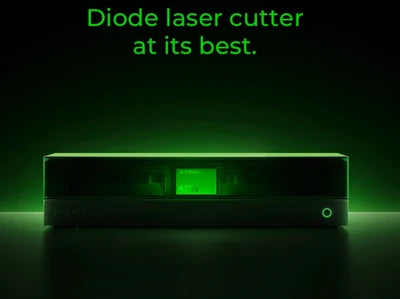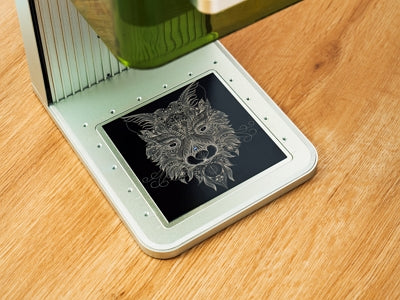From enabling precise medical procedures to playing a pivotal role in printing and manufacturing, lasers have become integral across various markets. But, are all these lasers identical in their operation? Are they all safe?
The answer is no; while they all adhere to the fundamental definition and principle of a laser, they are not the same. A laser is a device that emits light through a process of optical amplification. In layman’s terms, it focuses light into a concentrated beam, offering a level of precision and control unmatched by other light sources.
The differences in lasers, particularly in their safety, are defined through laser classes. These classes help in identifying the potentially harmful lasers and hint at necessary precautionary steps, one should take while using them.
In this article, we will explore the different laser classes and mention how safe each one is. Additionally, we will spotlight a Class 1 laser product, renowned for its safety.

In This Article
- Why Laser Classification Matters
- Understanding Laser Classes
- Why Class 1 Lasers Products are Safer?
- Laser Safety Guidelines: Do's and Don'ts
- Conclusion
Why Laser Classification Matters
As we know, lasers emit concentrated light. The direct exposure poses significant risks to the eyes and skin. The laser classification system informs users about necessary safety measures and precautions. This aids in preventing accidents and ensuring safety in places like medical facilities and manufacturing plants.
Each laser class dictates specific control levels and protective measures. Lower-class lasers require basic precautions, while higher-class ones demand stringent controls and protective gear.
Beyond individual safety, laser classification promotes responsibility and awareness of laser usage. It contributes to creating safer environments and encourages responsible use of laser technology across various sectors.
Understanding Laser Classes
Lasers are classified based on the power/energy and the potential harm they can cause. One term that is excessively used when describing laser classes is Maximum Permissible Exposure (MPE). It represents the highest level of laser radiation to which a person may be exposed without hazardous effects or biological changes in the eye or skin.
According to IEC 60825-1, lasers are divided mainly into four classes; some of the classes have subclasses. Let's explore each one:
Class 1 Laser
Class 1 is a very low-powered laser, and it is safe for all under normal conditions. There is no possibility of exceeding the MPE. Class 1 laser is particularly used in laser printers and CD players.
Class 1M Lasers are safe for all conditions of use except when passed through magnifying optics like microscopes and telescopes. They can be potentially hazardous when viewed with optical instruments. Examples include fiber optic communication devices.
It’s pertinent to mention that a Class 1 Laser Product doesn’t imply that the laser within the machine is inherently low-powered or of Class 1. In fact, a Class 1 laser product could house a laser of any class, including the high-powered Class 4 lasers. The classification of the product as Class 1 is due to the enclosure and design that ensures the user cannot access the laser light during normal operation.
Class 2 Laser
Class 2 indicates visible lasers with low power, less than 1 mW. They are safe because the blink reflex will limit the exposure to no more than 0.25 seconds. It assumes that the person being exposed will react to the bright light and avoid staring into the beam.
Class 2M lasers are again safe due to the blink reflex unless an optical instrument is used. If used, this could exceed MPE. Laser pointers and some range-finding equipment contain class 2 lasers.
Class 3 Laser
Class 3R lasers are continuous wave (CW) and have power between 1 to 5 mW. Pointing devices and scanners are common examples. The perceived risk is low, and the probability of injury is minimal under normal use. However, there is a potential risk if the user deliberately stares into the beam.
Class 3B lasers are moderately powered (5 to 500 mW). They are typically used in spectrometry and medical fields. Again, direct exposure to the beam can be hazardous to the eye, and diffuse reflections can also be harmful. Protective eyewear is typically required.
Class 4 Laser
Class 4 lasers are highly powered (> 500 mW), and typically used in medical surgery, laser cutting, welding, and micromachining. These lasers can induce severe eye and skin injuries and also pose a fire hazard. In addition, they can cause damage from direct and scattered light. Protective measures, including eyewear and training, are essential.
| Laser Classes | Power | Safety Level | Example | Protective Measures |
|---|---|---|---|---|
| Class 1 / 1M | Very low Powered | None required | Printers / DVD players | Avoid use with optical instruments |
| Class 2 / 2M | < 1mW | Safe with caution | Range finding equipment | Avoid direct eye exposure |
| Class 3R | 1 – 5 mW | Can cause eye damage if directly viewed | Pointing devices, Scanners | Avoid direct eye exposure |
| Class 3B | 5 – 500 mW | Can cause immediate eye and skin damage | Spectrometry, Medical Research | Protective eyewear required |
| Class 4 | > 500 mV | High risk; may ignite combustible materials | Industrial laser machines | Protective eyewear and additional safety measures required |
Why Class 1 Lasers Products are Safer?
Class 1 laser engravers are distinct due to their inherent safety features and versatile functionality. The enclosed design of these engravers ensures that there is no risk of exposure to harmful laser radiation during normal use. It also prevents any potential fire hazards by containing the laser beam within a controlled environment.
These products often come with an automatic shut-off mechanism. This mechanism activates if someone opens the enclosure during operation, preventing any direct interaction between the user and the laser. It enhances user safety significantly.
Some Class 1 laser products also feature filtering lids. These lids block harmful rays emitted by the internal laser. So, even with a high-powered Class 4 laser inside, the user remains shielded from exposure and harm due to the product's design.
Thus, many prefer Class 1 laser products for various laser applications. They offer a secure and reliable option compared to open laser machines.
xTool S1: The Safest Diode Laser Cutter
The xTool S1 is a market leader in laser safety, symbolizing protection with its Class 1 certification. This enclosed machine integrates advanced safety features like a dual laser light filtering cover, which eliminates the need for safety glasses.
It’s not just safe but also powerful, boasting a 40W high-power diode laser. With that, it’s capable of cutting and engraving a variety of materials with precision. It combines efficiency with safety, featuring optimal air quality maintenance, quick anomaly responses, and an automatic shut-off feature for accidental openings during processing.
Additionally, the S1 enhances user-friendliness with innovative features like Twin-point Positioning for precise real-time measurements. The machine is a perfect blend of safety, power, and innovation, designed for small businesses, DIYers, designers, artisans, educators, and woodworkers.
Laser Safety Guidelines: Do's and Don'ts
Laser machines, as mentioned, predominantly fall under Class 4 lasers, and not every machine attains the certification as a Class 1 laser product. Therefore, exercising extreme caution is imperative when operating them. To assist you in the safe utilization of laser cutting and engraving machines, we have compiled a concise list of do’s and don’ts.
Do’s
- Proper Material Setting: Use appropriate parameters to ensure the perfection of the work and avoid potential safety hazards.
- Use Laser Enclosure for Protection: An enclosure that surrounds the entire laser will eliminate the risk of accidental injury and ensure debris remains within the enclosure. Most of the xTool Class 4 machines are fully enclosed except the open diode laser D1 Pro. However, we have designed a D1 enclosure set to prevent the leakage of harmful radiation, keeping you safe.
- Prioritize Eye Protection: Always wear laser goggles that cover the wavelength range of your laser machine. This protective measure is essential to avoid any accidental exposure that could potentially harm your eyesight. We recommend using xTool professional safety glasses, especially when working with xTool D1 Pro.
- Employ Air Assist for Optimal Cutting: Using Air Assist can prevent smoke, distortion, and discoloration. It ensures that the cuts are clean and the finishes are smooth. Try using xTool Air assist set, which offers an exceptional flow of 30L/min to keep cuts and workspace clean.
- Clean the Workspace Post-Operation: After each project, clean the scraps, debris, and dust from your working area. This practice is essential in reducing the risk of fire and exposure to harmful fumes or particles.
- Ensure Adequate Ventilation: Given that lasers produce fumes and smoke during operation, you need a proper ventilation system that purifies the smoke before it’s released into the atmosphere. For instance, you may use the xTool smoke purifier which does a 3-stage filtration and keeps the noise level under 55 dB.
- Thoroughly Read the Manual: Before using the laser, read the safety and operating instructions thoroughly.
Don’ts
- Don’t Leave the Machine UnAttended: Never leave your laser unattended while it is running to avoid any fire hazard or other mishaps.
- Don’t Bypass Safety Protocols: Avoid overriding or bypassing the built-in safety features and protocols of the laser equipment. These features are designed to prevent accidents and ensure safe operation.
- Don’t Ignore Warning Signs: Always heed all warning signs and labels on the laser equipment. These warnings are there to guide users in safely operating the equipment.
- Don’t Expose Eyes or Skin to Laser Beam: When working with open laser machines, avoid any direct exposure of your eyes or skin to the laser beam. Such exposure can lead to severe injuries and long-term damage.
Conclusion
Laser classes are established to enlighten users about the inherent risks and necessary safety measures associated with each type of laser. The advanced xTool S1 is designated as a Class 1 laser product.
However, for those open laser machines such as the D1 Pro, xTool provides a Safe Kit complete with an enclosure to ensure enhanced safety for all users. This dedication to safety underscores xTool’s mission to offer cutting-edge, reliable, and secure laser technology to users across the spectrum.



